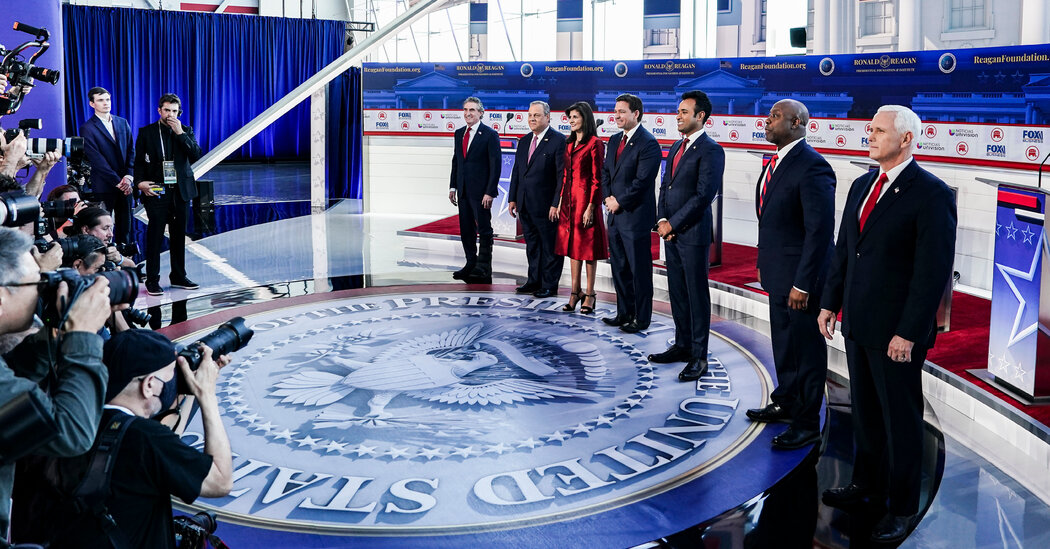Anti-Affirmative Action Group Sues West Point Over Admissions Policy
The group that won a major Supreme Court victory against affirmative action in June sued the U.S. Military Academy at West Point on Tuesday, arguing that the court’s ruling barring race-conscious college admissions should extend to the nation’s military academies as well.
The group, Students for Fair Admissions, was the driving force behind the lawsuit that led the Supreme Court to strike down race-conscious admissions at Harvard University and the University of North Carolina, a decision that has roiled admissions programs at colleges and universities across the country.
But the court specifically excluded the military academies, including West Point, the Naval Academy and the Air Force Academy, from its decision that affirmative action in college admissions could not be reconciled with the Constitution’s equal protection guarantees. In a footnote to the majority opinion, Chief Justice John G. Roberts Jr. wrote that the court was not ruling one way or the other on the academies, because of “the potentially distinct interests that military academies may present.”
That footnote created an opening for a new round of litigation, and Students for Fair Admissions took it.
“For most of its history, West Point has evaluated cadets based on merit and achievement,” the group said in its complaint, filed on Tuesday in the Southern District of New York. But that changed, the group argued, over the last few decades.
“Instead of admitting future cadets based on objective metrics and leadership potential, West Point focuses on race,” the complaint says, in accusing the academy of practices that violate the Fifth Amendment, which it says “contains an equal-protection principle that binds the federal government and is no less strict than the Equal Protection Clause that binds the states.”
Any decision in the case would probably apply to the other service academies as well.
The complaint revives a longstanding debate over whether national security depends on the military academies being permitted to use racial preferences to develop a pipeline of officers who mirror the demographic composition of the enlisted troops and the population at large.
The argument has been a feature of previous Supreme Court cases, going back at least to Grutter v. Bollinger, a 2003 decision upholding race-conscious admissions at the University of Michigan’s law school, which was the leading precedent on affirmative action until this year.
An amicus brief filed in that case by former high-ranking officers and civilian military leaders argued that the percentage of officers serving in the Vietnam War who were African American was so small — only 3 percent by the war’s end — that it led to low morale and heightened racial tension in the ranks.
“For the United States military, as I’ve explained, having a diverse officer corps is a critical national security imperative,” Elizabeth Prelogar, the U.S. solicitor general, said during oral arguments before the Supreme Court in the Harvard and North Carolina cases.
Students for Fair Admissions said in its complaint that this view is rooted in particular circumstances of the Vietnam War — an unpopular war, to which soldiers were drafted — that no longer apply.
An amicus brief filed in support of the plaintiffs in the Harvard case by a group of veterans notes that the composition of the military has changed significantly since the Vietnam War. As of 2020, 27 percent of Army officers were members of a racial minority, and 12.3 percent were Black — only about 1 percentage point less than the Black share of the national population. And the military is now all-volunteer, with no draft in effect.
The complaint uses the recent Supreme Court decision as a road map. For instance, the court faulted Harvard and North Carolina for racial stereotyping and for not having a meaningful endpoint for their affirmative action programs, and the complaint accuses West Point of the same.
About 19 percent of officers in all branches of the U.S. military come from the service academies, according to an amicus brief that the Biden administration filed supporting Harvard and North Carolina. But there is an imbalance. In today’s military, the administration’s brief said, white service members account for 53 percent of the active force but 73 percent of officers, while Black service members make up 18 percent of the active force but 8 percent of officers.
In an all-volunteer military, the search for parity between the officer corps and the enlisted corps is an ever-shifting goal, “tantamount to a declaration that West Point will never stop using race in admissions,” the complaint says, adding that the claim that parity is needed to foster trust between officers and troops “relies on crude and infantilizing stereotypes.”
Others said it was too easy to dismiss racial strife within the military as a problem that has been solved.
“The U.S. military was relatively ahead of the rest of society in implementing what today we call diversity, equity and inclusion programs,” sad John W. Hall, a 1994 West Point graduate and professor of U.S. military history at the University of Wisconsin-Madison. “There is considerable risk associated with revoking those policies.”


